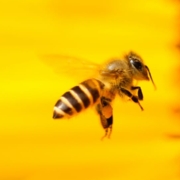Nutrition for kids: Guidelines for a healthy diet
This original article was published by the Mayo Clinic Staff. Click here for more information!
You want your child to eat healthy foods, but do you know which nutrients are needed and in what amounts? Here’s a quick overview.
Introduction
Nutrition for kids is based on the same ideas as nutrition for adults. Everyone needs the same types of things, such as vitamins, minerals, carbohydrates, protein and fat. These are called nutrients. Children need different amounts of specific nutrients at different ages.
The best eating pattern for a child’s growth and development considers the child’s age, activity level and other characteristics. Check out these nutrition basics for kids, based on the latest Dietary Guidelines for Americans.
Food packed with nutrients — with no or limited sugar, saturated fat, or salt added to it — is considered nutrient dense. Focusing on nutrient-dense foods helps kids get the nutrients they need while limiting overall calories.
Consider these nutrient-dense foods:
- Protein. Choose seafood, lean meat and poultry, eggs, beans, peas, soy products, and unsalted nuts and seeds.
- Fruits. Encourage your child to eat a variety of fresh, canned, frozen or dried fruits. Look for canned fruit that says it’s light or packed in its own juice. This means it’s low in added sugar. Keep in mind that 1/4 cup of dried fruit counts as one serving of fruit.
- Vegetables. Serve a variety of fresh, canned, frozen or dried vegetables. Choose peas or beans, along with colorful vegetables each week. When selecting canned or frozen vegetables, look for ones that are lower in sodium.
- Grains. Choose whole grains, such as whole-wheat bread or pasta, oatmeal, popcorn, quinoa, or brown or wild rice.
- Dairy. Encourage your child to eat and drink fat-free or low-fat dairy products, such as milk, yogurt and cheese. Fortified soy beverages also count as dairy.
Aim to limit your child’s calories from:
- Added sugar. Naturally occurring sugars, such as those in fruit and milk, aren’t added sugars. Examples of added sugars include brown sugar, corn sweetener, corn syrup and honey. To avoid added sugar, check nutrition labels. Choose cereals with minimal added sugars. Avoid sodas and other drinks with added sugars. Limit juice servings. If your child drinks juice, make sure it’s 100% juice without added sugars.
- Saturated fats. Saturated fats mainly come from animal sources of food, such as red meat, hot dogs, poultry, butter and other full-fat dairy products. Pizza, sandwiches, burgers and burritos are a common source of saturated fat. Desserts such as cakes and ice cream are another common source of saturated fat. When cooking, look for ways to replace saturated fats with vegetable and nut oils, which provide essential fatty acids and vitamin E.
- Salt. Most children in the United States have too much salt in their daily diets. Another name for salt is sodium. Salt can hide in sandwiches, where the sodium in bread, meat, condiments and toppings adds up. Processed foods, such as pizza, pasta dishes and soup, often have high amounts of salt. Encourage snacking on fruits and vegetables instead of chips and cookies. Check nutrition labels and look for products low in sodium.
If you have questions about nutrition for kids or specific concerns about your child’s diet, talk to your child’s health care provider or a registered dietitian.
| Calories | 1,000 to 1,400, depending on growth and activity level |
| Protein | 2 to 4 ounces |
| Fruits | 1 to 1.5 cups |
| Vegetables | 1 to 1.5 cups |
| Grains | 3 to 5 ounces |
| Dairy | 2 to 2.5 cups |
| Calories | 1,000 to 1,600, depending on growth and activity level |
| Protein | 2 to 5 ounces |
| Fruits | 1 to 1.5 cups |
| Vegetables | 1 to 2 cups |
| Grains | 3 to 5 ounces |
| Dairy | 2 to 2.5 cups |
| Calories | 1,200 to 1,800, depending on growth and activity level |
| Protein | 3 to 5 ounces |
| Fruits | 1 to 1.5 cups |
| Vegetables | 1.5 to 2.5 cups |
| Grains | 4 to 6 ounces |
| Dairy | 2.5 cups |
| Calories | 1,200 to 2,000, depending on growth and activity level |
| Protein | 3 to 5.5 ounces |
| Fruits | 1 to 2 cups |
| Vegetables | 1.5 to 2.5 cups |
| Grains | 4 to 6 ounces |
| Dairy | 2.5 cups |
| Calories | 1,400 to 2,200, depending on growth and activity level |
| Protein | 4 to 6 ounces |
| Fruits | 1.5 to 2 cups |
| Vegetables | 1.5 to 3 cups |
| Grains | 5 to 7 ounces |
| Dairy | 3 cups |
| Calories | 1,600 to 2,600, depending on growth and activity level |
| Protein | 5 to 6.5 ounces |
| Fruits | 1.5 to 2 cups |
| Vegetables | 2 to 3.5 cups |
| Grains | 5 to 9 ounces |
| Dairy | 3 cups |
| Calories | 1,800 to 2,400, depending on growth and activity level |
| Protein | 5 to 6.5 ounces |
| Fruits | 1.5 to 2 cups |
| Vegetables | 2.5 to 3 cups |
| Grains | 6 to 8 ounces |
| Dairy | 3 cups |
| Calories | 2,000 to 3,200, depending on growth and activity level |
| Protein | 5.5 to 7 ounces |
| Fruits | 2 to 2.5 cups |
| Vegetables | 2.5 to 4 cups |
| Grains | 6 to 10 ounces |
| Dairy | 3 cups |


